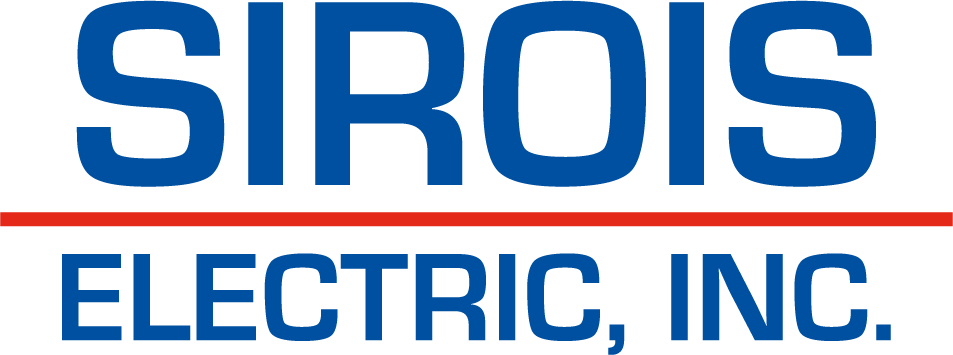The Cost and Benefits of an Automatic Snow Melt System in Greater Boston
Contact Us
The Cost and Benefits of an Automatic Snow Melt System in Greater Boston
Understanding Automatic Snow Melt Systems
An automatic snow melt system is a smart solution designed to eliminate snow and ice from driveways, walkways, and other surfaces without manual intervention. These systems work by using either electric heating cables or hydronic tubing embedded beneath the surface to generate heat when snow or ice is detected. Electric systems rely on resistance heating, while hydronic systems circulate warm water through pipes. Both types are highly effective but differ in energy consumption and installation complexity. Automation plays a key role, with sensors detecting moisture and temperature changes to activate the system only when needed.
These systems consist of several major components, including the heating elements, control units, sensors, and sometimes a boiler for hydronic setups. The integration of advanced technology allows for hands-off operation, ensuring that snow is melted efficiently and without requiring homeowners to shovel or use de-icing chemicals. Understanding these basics can help property owners make informed decisions about adopting this winter convenience.
Climate Factors in Greater Boston Affecting Snow Melt Needs
Greater Boston experiences cold winters with significant snowfall, averaging around 43 inches annually. Temperatures often hover near or below freezing, creating ideal conditions for snow and ice accumulation. This climate poses challenges for homeowners and businesses, as icy surfaces increase the risk of slips and falls. Additionally, frequent snow removal can be time-consuming and labor-intensive, making automated solutions particularly appealing.
Given these conditions, investing in a snow melt system can greatly enhance safety and convenience. The consistent need for snow management during the colder months makes Greater Boston an ideal location for such installations. By addressing these weather-related challenges, residents and businesses can enjoy peace of mind throughout the winter season.
Installation Costs in Greater Boston
The cost of installing an automatic snow melt system varies based on factors like system type, surface area, and local labor rates. On average, electric systems cost between $10 and $20 per square foot, while hydronic systems can range from $15 to $30 per square foot. Materials such as heating cables, mats, and control systems also contribute to the overall expense. Larger driveways or complex designs may require additional materials and labor, increasing the total investment.
In Greater Boston, local contractors typically charge competitive rates, but prices can fluctuate depending on demand and project scope. For example, retrofitting an existing driveway with a snow melt system might involve extra costs for excavation and preparation. Homeowners should consider their specific needs and budget when planning an installation, ensuring they choose a system that balances affordability with performance.
Another factor influencing costs is the choice between cable-based and mat-based systems. Mats are easier and faster to install, which can reduce labor expenses, while cables offer more flexibility for custom layouts. Control systems, which automate activation, add to the upfront cost but provide long-term savings through efficient energy use. Careful planning and consultation with professionals can help optimize costs without compromising quality.
Operational Costs and Energy Consumption
Operating an automatic snow melt system involves ongoing energy expenses, which depend on factors like system type, surface area, and local utility rates. In Greater Boston, electric systems typically cost between $0.10 and $0.20 per square foot per hour of operation. For a typical snow event lasting several hours, this translates to manageable operational costs for most homeowners and businesses.
Hydronic systems, while more expensive to install, often have lower running costs due to their reliance on heated water rather than direct electrical resistance. However, they may require a boiler or other heating source, which can influence overall energy consumption. Utility rates in Massachusetts vary by provider, so it’s important to factor these into your calculations when estimating seasonal expenses.
Efficient controls play a crucial role in minimizing operational costs. Automated sensors ensure the system operates only when necessary, reducing unnecessary energy use. By optimizing settings and targeting high-priority areas, property owners can achieve significant savings over time. Understanding these dynamics helps Boston residents make informed decisions about their snow melt investments.
Primary Benefits of Automatic Snow Melt Systems
One of the biggest advantages of an automatic snow melt system is improved safety. By eliminating slippery ice and snow, these systems drastically reduce the risk of accidents on driveways, walkways, and entryways. This benefit is especially valuable in Greater Boston, where icy conditions are common during winter months. Residents can enjoy peace of mind knowing their properties are safer for family members and visitors alike.
Convenience and time savings are other major perks. Instead of spending hours shoveling or applying de-icing chemicals, homeowners can focus on other priorities while the system handles snow removal automatically. Maintenance requirements are minimal, thanks to durable components and self-regulating features. With efficiency rates reaching up to 99% energy transfer, these systems deliver reliable performance with little waste.
For businesses, the benefits extend to enhanced customer experience and reduced liability risks. Clear pathways and parking areas create a professional appearance while ensuring accessibility during inclement weather. The long-term value of these systems lies in their ability to combine safety, convenience, and sustainability, making them a worthwhile investment for many Greater Boston properties.
Comparison: Permanent Systems vs Portable Mats
Permanent snow melt systems are installed directly into driveways or walkways, offering a seamless and integrated solution. While they require a higher upfront investment, their durability and automation capabilities make them ideal for long-term use. In contrast, portable mats like HeatTrak provide a flexible alternative for smaller areas or temporary setups. These mats are easier to install and less expensive but lack the same level of coverage and automation.
Each option has its best-use scenarios. Permanent systems excel for large, high-traffic areas such as driveways and commercial entrances, while portable mats are better suited for targeted applications like front steps or short walkways. Homeowners and businesses should weigh factors like budget, space, and intended usage before deciding which solution meets their needs.
Maintenance and Lifespan Considerations
Most automatic snow melt systems are designed to be low-maintenance, with many boasting lifespans of 15 to 25 years or more. Electric systems are particularly durable, as they contain no moving parts and are resistant to wear and tear. Hydronic systems may require occasional checks on boilers or pumps, but even these tasks are infrequent and straightforward.
Repairs are rare, especially if the system is properly installed and maintained. Many manufacturers offer warranties that cover defects or malfunctions, providing additional peace of mind. With no mechanical room required and minimal upkeep, these systems represent a hassle-free solution for Greater Boston residents seeking reliable snow management year after year.
Available Controls and Automation Options
Control systems for automatic snow melt setups range from simple manual timers to advanced automated sensors. Basic models allow users to activate the system at specific times, while sensor-based options detect snow and temperature changes to trigger melting only when necessary. These smart controls optimize energy use, ensuring the system operates efficiently without wasting resources.
While automated systems tend to be pricier upfront, they offer significant long-term savings by reducing unnecessary activation. Features like remote monitoring and programmable settings further enhance convenience, allowing users to manage their systems easily. Investing in quality controls not only improves functionality but also maximizes the overall value of the snow melt system.
Common Applications: Residential and Commercial Uses
In Greater Boston, residential snow melt systems are commonly used on driveways, walkways, and steps to ensure safe access during winter. Homeowners appreciate the added convenience and curb appeal these systems provide. They’re especially popular in upscale neighborhoods where aesthetics and functionality go hand in hand.
Commercial properties benefit from snow melt systems by maintaining clear parking lots, entryways, and loading docks. Businesses prioritize safety and accessibility for employees and customers, making these installations a strategic investment. From retail stores to office complexes, snow melt systems enhance operational efficiency and reduce liability risks associated with icy conditions.
Potential Drawbacks and Limitations
Despite their many advantages, automatic snow melt systems come with some drawbacks. The initial installation cost can be prohibitive for some homeowners, especially those with large driveways or complex layouts. Additionally, the increased electrical load required by these systems may necessitate upgrades to a property’s electrical infrastructure , adding to the expense.
In rare cases, extremely heavy snowfall or prolonged storms may overwhelm the system’s capacity, requiring supplemental clearing methods. However, modern systems are designed to handle typical winter conditions in Greater Boston effectively. By understanding these limitations, property owners can set realistic expectations and plan accordingly.
Cost-Saving Tips and Financing Options
To maximize the value of an automatic snow melt system, consider targeting high-traffic areas like entryways and steps rather than covering entire driveways. Optimizing control settings to minimize runtime can also lead to significant energy savings. Some local utilities offer rebates or incentives for energy-efficient installations, so it’s worth exploring these opportunities.
Financing options are available through many installers and financial institutions, allowing homeowners to spread out payments over time. Low-interest loans or payment plans can make these systems more accessible, especially for larger projects. By combining smart design choices with financial strategies, residents can enjoy the benefits of snow melt technology without breaking the bank.
How to Choose the Right Snow Melt System Provider in Boston
Selecting a reputable installer is crucial for ensuring a successful snow melt system installation. Look for providers with extensive experience in designing and implementing these systems, as well as strong customer service reputations. Ask about their approach to customization, warranties, and post-installation support to gauge their reliability.
Before hiring, inquire about past projects, references, and certifications. Questions like “What types of systems do you specialize in?” or “Can you provide examples of similar installations?” can help you assess their expertise. Choosing the right partner ensures your investment delivers optimal performance and longevity.
FAQ: Automatic Snow Melt Systems in Greater Boston
How much does it cost to install an automatic snow melt system in Boston? Installation costs typically range from $10 to $30 per square foot, depending on system type and project complexity. For a standard driveway, this could translate to several thousand dollars.
How expensive is it to run a snow melt system during a typical Boston winter? Operational costs average between $0.10 and $0.20 per square foot per hour, with total seasonal expenses varying based on snowfall and energy rates.
Is an automatic snow melt system safe for all surface types? Yes, these systems are compatible with concrete, asphalt, and pavers, though proper installation is key to avoiding damage to existing surfaces.
Does the system require regular maintenance or yearly checkups? Most systems are nearly maintenance-free, though occasional inspections can help identify potential issues early.
What happens during a power outage or system failure? Backup generators or manual overrides can mitigate disruptions, and professional support ensures quick resolution of any problems.
Conclusion
Investing in an automatic snow melt system offers numerous benefits for Greater Boston residents, from enhanced safety to unparalleled convenience. While upfront costs can be significant, the long-term value—including reduced maintenance and improved winter accessibility—makes these systems a worthwhile addition to many properties. Their operational efficiency and minimal upkeep further underscore their appeal.
Taking action starts with evaluating your home or business needs and consulting a trusted local provider. By choosing the right system and installer, you can enjoy a safer, more convenient winter experience while adding value to your property. Don’t wait until the next storm hits—explore your options today and prepare for a worry-free winter season.


